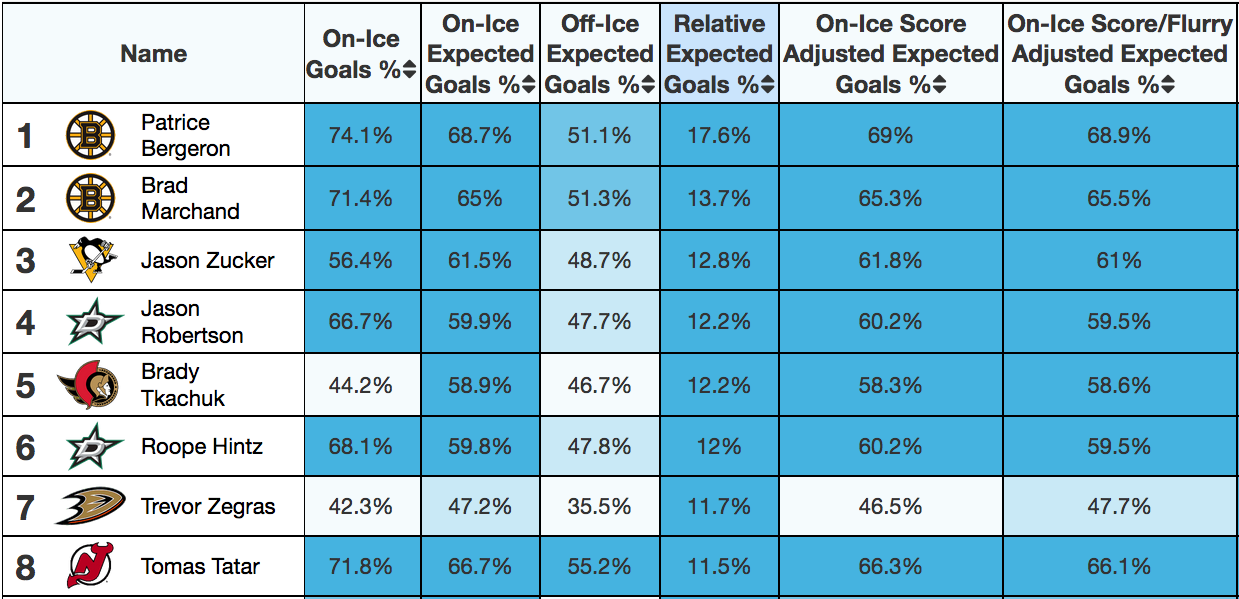Why Roope Hintz Is Central to the Dallas Stars' Success
Dallas' first-line pivot is a force in all three zones

Disclaimer: In order to even out any peaks and valleys, the clips in this article were pulled from six randomly selected games.
The 21-9-6 Dallas Stars are sporting their highest points percentage since 2005-06. Better yet, there are plenty of reasons for their exceptional start beyond playoff hero Jake Oettinger.
To name a few:
Jason Robertson has emerged as a legitimate MVP candidate.
Miro Heiskanen is thriving with more freedom on the blue line.
Jamie Benn is enjoying a major bounce-back year.
Free-agent signing Mason Marchment has fit in nicely.
With all these positives to pick from—not to mention Joe Pavelski’s steady contributions—it’s easy to overlook Roope Hintz. But you shouldn’t. Due to his production and influence on the team’s pace, he’s just as pivotal to the Stars’ success as anyone on the roster outside of Robertson:

Let’s take a look at what the 26-year-old brings to the table.
Puck Pursuit
Hintz has developed a reputation as a strong defender, and by top-six standards, his positioning and commitment to three-zone play are impressive.
Don’t mistake the big Finn for a shutdown center, though. He might be able to assume that role, but Dallas doesn’t deploy him that way. Instead of blanketing the opposition’s stars, Hintz leverages his 6’3”, 215-pound frame and powerful skating to establish puck control all over the ice.
In the offensive zone, he’ll swoop in to tip the scale whenever possession becomes a 50/50 proposition. If the puck is headed toward Dallas’ cage, he’ll sneak up from behind and snatch it away.
Much like Auston Matthews, he…looms over the action. You get the sense that he’s continually breathing down your neck:
Hintz’s nose for the puck is crucial to Dallas’ top trio. Neither Robertson nor Pavelski are the most dynamic skaters, so Hintz ensures that they’re as involved as possible by feeding them regular touches. They can worry about what to do with possession rather than focusing on obtaining it in the first place.
Naturally, this limits the time Dallas spends on its heels. When he’s on the ice, the team owns:
55.8% of the shot attempts.
59.9% of the scoring chances.
63.5% of the high-danger chances.
If you believe that the best defense is not having to defend much at all, Hintz’s play is a prime example.
Long Speed
In addition, Hintz’s puck pursuit turns defense into transition offense—and he can really fly for a big man. It’s worth mentioning, however, that his speed is built for long distances. He doesn’t so much explode out of the blocks as stretch defenses with a sort of snowballing tempo.
He’s a freight train that keeps getting faster as it roars downhill.
Robertson and Pavelski both seek to spring him in the neutral zone, and considering the talent between them, Hintz often receives the puck with a full head of steam. This obviously leads to copious rush opportunities:
Not only does Hintz use his wheels to bombard opponents himself, but the defense has to respect him so much that he makes life easier for everyone around him. Zone entries are suddenly a walk in the park. Rebounds are there for the taking behind Dallas’ first wave of attack.
Meanwhile, with the puck-carrying legwork accounted for, Robertson and Pavelski can sneak into soft spots and conjure their magic on offense.
When you can pressure opponents at multiple speeds, you can govern the lion’s share of the game. As a line, Hintz, Robertson and Pavelski rank fourth leaguewide in expected goal rate:

That’s some elite company.
Vision
Top-line forwards need to convert expected goals into actual goals too. Thankfully, Dallas’ main attractions fare even better in that department.
Sure, Robertson, Pavelski and Hintz are capable finishers. In fact, Hintz is perhaps best known as a heavy shooter. However, the keys to their line are their versatility and chemistry. They’re all quick thinkers, solid playmakers and capable finishers. Consequently, they can spread the Grade A chances around.
Moreover, new head coach Peter DeBoer has loosened the leash on his blue line. Dallas’ defensemen are encouraged to storm the backdoor or provide support below the opposition’s goal line.
Hintz, an underrated passer, now has options everywhere he looks:
No, he isn’t the most graceful setup man. He’s much likelier to brute-force a pass to its destination than send a feathery sauce to a teammate, but as long as it gets there, who cares?
It doesn’t matter whether he’s on the rush or the cycle. Hintz has a knack for spotting openings and manufacturing rapid-fire offense.
When he’s on the ice, Dallas registers 18.03 high-danger chances (3rd among NHL forwards) and 4.30 goals (5th) per 60 minutes. Few teams are as dangerous as the Stars are during his shifts, and that’s because the team’s emphasis on five-man interplay has unlocked his potential as a passer.
He’s posting the highest primary assist rate of his career and the sixth-highest average in the entire league. Factor in his goal scoring (18 goals in 35 games), and he’s currently the fourth-most productive player per minute in 2022-23.
It’s easy to view Hintz as the player who piled up 37 goals last season, but that’s only part of the picture. He also torments opponents at both ends of the ice, makes transition a breeze for his linemates and sets them up with one incisive pass after another.
He’s invaluable to Dallas’ style of play. Look at how the Stars perform when he’s on and off the ice:

Through his play with and around the puck, Hintz consistently gets Dallas moving in the right direction.



